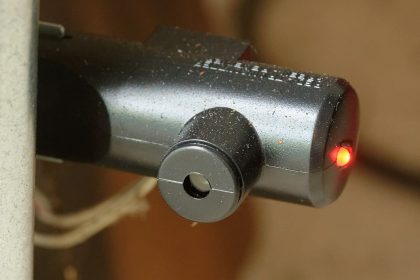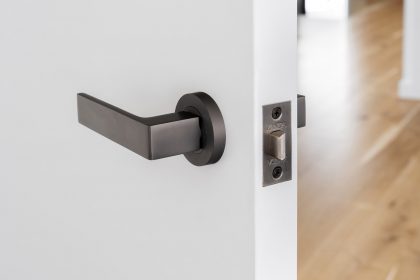How much do you think about your home’s energy consumption? If you’re like most people, probably not much. But the truth is, your home is likely responsible for a significant amount of energy consumption and greenhouse gas emissions. In fact, the average U.S. household emits about 10,000 pounds of carbon dioxide per year! But it doesn’t have to be this way.
There are plenty of things you can do to reduce your home’s energy consumption and save money in the process. From simple tips like turning off lights when you leave a room to more significant measures like upgrading your insulation, there are many ways to make your home more energy-efficient. Check out these eight tips to get started:
Insulate Your Home
If your home is not properly insulated, you could be spending a lot of money on energy bills each month. By insulating your home, you can keep the heat in during the winter and the cool air in during the summer, which will save you money on your energy bills. Here are some tips for insulating your home:
1. Check for air leaks. Make sure that there are no gaps or cracks around doors and windows where air can escape. If you find any, seal them with weatherstripping or caulk.
2. Add insulation to your attic. Attic insulation is one of the most effective ways to reduce heat loss in your home. If your attic is not already insulated, consider adding insulation to keep your home warm in the winter and cool in the summer.
3. Insulate your walls. Another way to reduce heat loss in your home is by insulating your walls. You can add insulation to your walls by installing wall insulation panels or blown-in insulation.
4. Use window coverings. Window coverings can also help to reduce heat loss from windows. During the winter, heavy curtains or blinds can help keep the heat in, and during the summer, light curtains or shades can help keep the cool air in.
5. Consider a whole-house fan. A whole-house fan can be an effective way to circulate air throughout your home and help reduce energy costs.
Get an Energy Audit
1. Get an Energy Audit
You can save money and energy by getting an energy audit. An energy audit will help you find out how much energy your home uses and what improvements you can make to reduce your energy consumption. Many utility companies offer free or discounted energy audits, so be sure to check with your local provider.
2. Educate Yourself on Energy Savings
There are many ways to save energy in your home, but you won’t be able to take advantage of them if you don’t know about them! Start by doing some research on the subject, or talk to friends and family who have made changes in their own homes. Once you have a good understanding of the basics, you can start making changes in your own home.
3. Implement Energy Saving Changes Slowly
You don’t have to make all of the changes at once – in fact, it’s probably not realistic (or necessary) to do so. Just pick one or two things that you can change this month, and then add more changes as you go along. Over time, all of those small changes will add up to big savings!
Educate Yourself About Energy
There are many ways to save money and energy in your home. One way is to educate yourself about energy. This can help you make informed decisions about how to use energy more efficiently.
You can learn about energy by reading books, articles, or websites. You can also attend workshops or seminars, or watch videos. Once you have a better understanding of how energy works, you can start making changes in your home to reduce your energy consumption.
Some simple tips for saving energy include: turning off lights when you leave a room, unplugging electronics when they’re not in use, and opening blinds or curtains to let natural light in during the day. You can also save energy by using power strips so that you can easily turn off multiple devices with one switch.
If you want to save even more money, you can invest in energy-efficient appliances or solar panels. These investments will pay for themselves over time by lowering your monthly energy bills.
Also Read: How to Find the Cheapest Energy Rates in Texas?
Use Fans and Ventilation
Most homes have central heating and cooling systems that work hard to keep the indoor temperature comfortable. However, these systems can use a lot of energy, which can drive up your utility bills. One way to offset this cost is to use fans and ventilation to help regulate the temperature in your home.
ceiling fans can help circulate air and make a room feel cooler without using much energy. In the winter, you can reverse the direction of the blades so they push warm air down from the ceiling, providing extra warmth.
Opening windows and doors is another way to let fresh air in and improve ventilation. This is especially effective when cooking or taking a shower, as these activities can generate a lot of heat and steam. Cracking a window open in these rooms can help expel the hot air and keep your home feeling comfortable.
Weatherize Your Home
According to the Environmental Protection Agency, weatherizing your home can save you up to 30% on your energy bill. Here are a few tips on how to weatherize your home:
1. Check for air leaks around doors and windows and seal them with caulk or weatherstripping.
2. Install storm doors and windows.
3. Add insulation to your attic, walls, and floors.
4. Use energy-efficient light bulbs and appliances.
5. Reduce the flow of hot air into your home by closing fireplace dampers when not in use, and seal heating and cooling ducts.
Install Programmable Thermostats
Installing a programmable thermostat is one of the best ways to save money and energy. By allowing you to control the temperature in your home, you can make sure that your heating and cooling system isn’t working harder than it needs to.
There are a few things to keep in mind when choosing a programmable thermostat. First, you’ll want to make sure that it’s compatible with your HVAC system. Second, you’ll want to choose a model that allows you to program different temperatures for different times of day.
Once you’ve found the perfect thermostat, installation is quick and easy. Most models come with detailed instructions, so all you need to do is follow the directions. In no time at all, you’ll be saving money and energy!
Consider Renewable Energy Sources
You can save money and energy by switching to renewable energy sources. Here are some tips:
1. Consider renewable energy sources like solar and wind power. Solar panels convert sunlight into electricity, while wind turbines harness the power of the wind. These clean, renewable energy sources can help you save money on your utility bills and do your part to protect the environment.
2. Look for government incentives. Many governments offer tax credits or other incentives to encourage homeowners to switch to renewable energy sources. Check with your local government to see what’s available in your area.
3. Make sure your home is well-insulated. This will help you keep your energy bills down, whether you use renewable energy sources or not. Adding insulation to your walls, attic, and floors is a great way to improve your home’s energy efficiency.
4. Seal up any air leaks around doors and windows. You can also install weather stripping or caulking to further reduce drafts and air leaks in your home.
5. Use energy-efficient appliances and light bulbs . ENERGY STAR certified appliances use less energy than standard models, which can save you money on your utility bills over time. LED light bulbs use about 75% less electricity than incandescent bulbs, so they’re a great way to save energy (and money) in your home.
Reduce Water Consumption
Water is one of the most essential resources on Earth, and yet we often take it for granted. Just think about all the ways you use water in a day – from cooking and cleaning to watering your plants and taking a shower. All that water adds up, and it’s not always easy on your wallet or the environment.
That’s why it’s important to find ways to reduce your water consumption. Every little bit counts, and even small changes can make a big difference. Here are some tips to help you get started:
1. Invest in low-flow fixtures:
One of the easiest ways to reduce your water consumption is to install low-flow fixtures in your home. Low-flow faucets, showerheads, and toilets use less water without sacrificing performance, so you can save money on your water bill without compromising your quality of life.
2. Fix leaks:
A leaky faucet may not seem like much, but it can waste a lot of water over time. Make sure to fix any leaks as soon as possible to avoid wasting this valuable resource.
3. Don’t let the water run:
When you’re brushing your teeth or washing dishes, there’s no need to let the water run the entire time. Turn it off when you don’t need it and you’ll save quite a bit of water over time.
4. Water your plants during the cooler hours of the day:
Water evaporates quickly in hot weather, so it’s best to water your plants during the cooler hours of the day. This will help reduce evaporation and ensure that your plants get the hydration they need.
5. Collect rainwater:
If you have a garden, you can collect rainwater to use for watering your plants. This is a great way to reduce your water consumption and save money on your water bill.
6. Use grey water:
Grey water is water that has been used for bathing, washing dishes, or laundry but is still clean enough to be used for other purposes. You can collect grey water in a container and use it to water your plants or flush your toilet.
7. Take shorter showers:
A shower is one of the biggest culprits when it comes to water waste. Try to take shorter showers to reduce your water consumption without compromising your hygiene.
8. Wash only full loads of laundry:
Washing smaller loads of laundry uses just as much water as washing a full load, so it’s best to wait until you have a full load before starting the wash cycle. You’ll save water and energy, and
Conclusion
There are a number of ways to save money and energy in your home. By making some simple changes, you can see significant savings on your utility bills. We hope that our tips have helped you figure out how to make your home more efficient and save you money in the process. Do you have any other tips for saving energy and money at home? Share them with us in the comments below!





